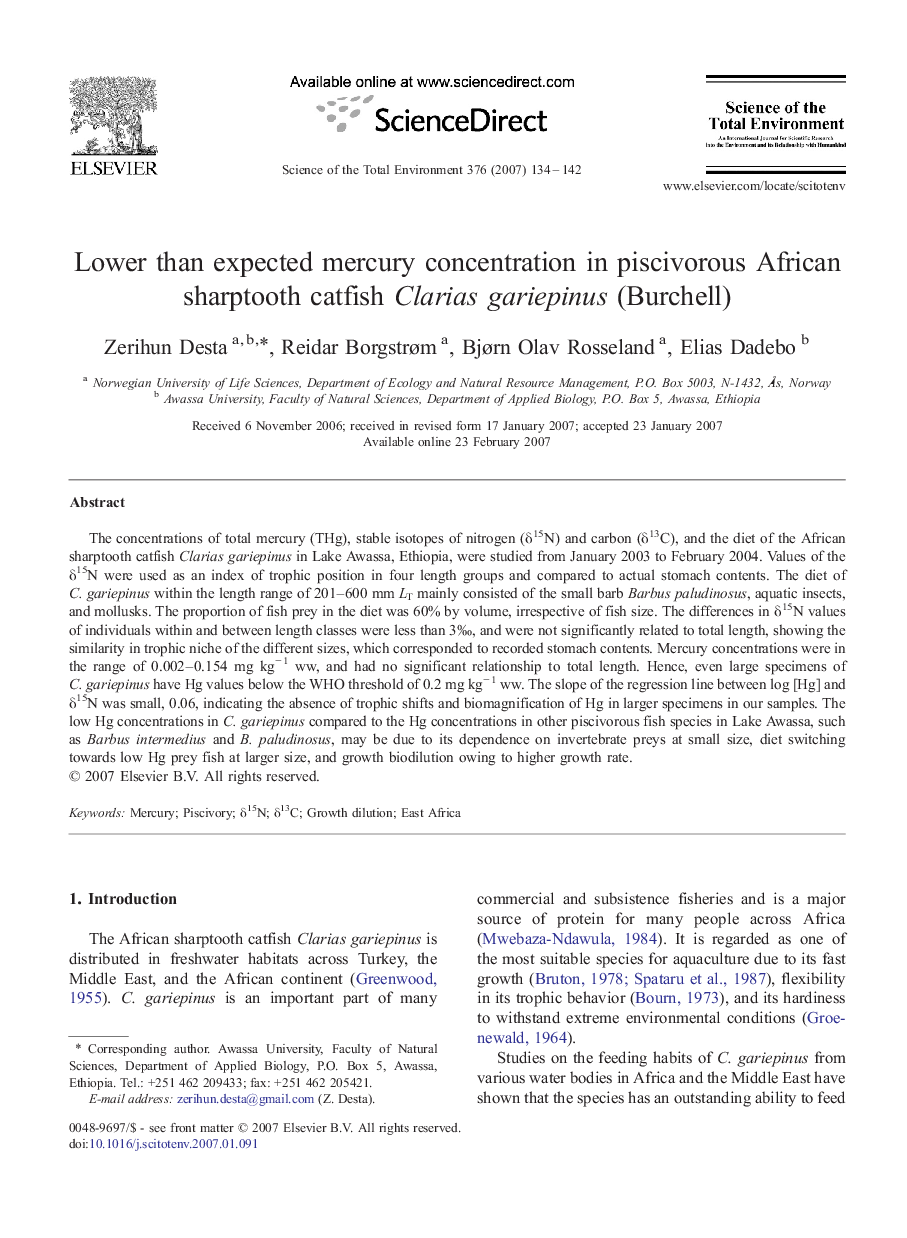| Article ID | Journal | Published Year | Pages | File Type |
|---|---|---|---|---|
| 4433483 | Science of The Total Environment | 2007 | 9 Pages |
The concentrations of total mercury (THg), stable isotopes of nitrogen (δ15N) and carbon (δ13C), and the diet of the African sharptooth catfish Clarias gariepinus in Lake Awassa, Ethiopia, were studied from January 2003 to February 2004. Values of the δ15N were used as an index of trophic position in four length groups and compared to actual stomach contents. The diet of C. gariepinus within the length range of 201–600 mm LT mainly consisted of the small barb Barbus paludinosus, aquatic insects, and mollusks. The proportion of fish prey in the diet was 60% by volume, irrespective of fish size. The differences in δ15N values of individuals within and between length classes were less than 3‰, and were not significantly related to total length, showing the similarity in trophic niche of the different sizes, which corresponded to recorded stomach contents. Mercury concentrations were in the range of 0.002–0.154 mg kg− 1 ww, and had no significant relationship to total length. Hence, even large specimens of C. gariepinus have Hg values below the WHO threshold of 0.2 mg kg− 1 ww. The slope of the regression line between log [Hg] and δ15N was small, 0.06, indicating the absence of trophic shifts and biomagnification of Hg in larger specimens in our samples. The low Hg concentrations in C. gariepinus compared to the Hg concentrations in other piscivorous fish species in Lake Awassa, such as Barbus intermedius and B. paludinosus, may be due to its dependence on invertebrate preys at small size, diet switching towards low Hg prey fish at larger size, and growth biodilution owing to higher growth rate.
